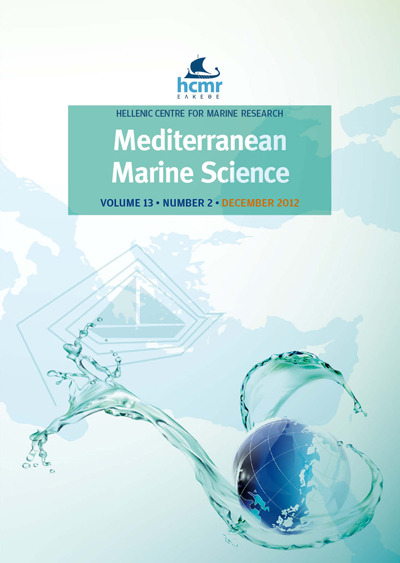Relationships between algal food and gut and gonad conditions in the Mediterranean sea urchin Paracentrotus lividus (Lam.)

Published:
Sep 26, 2012
Keywords:
Feeding index Gonadosomatic index Macroalgal diet Paracentrotus lividus Mediterranean Sea South Spain.
Abstract
A study was conducted on the population of Paracentrotus lividus (Lamarck, 1816) in a Mediterranean infralittoral bottom
of southern of Spain to characterize the relationships between the macroalgal food ingested and the gut and gonad conditions of individuals. Over a full annual cycle (November 2008 to October 2009) composition of the gut content was analyzed monthly and seasonally, the gastrointestinal (GII), repletion (RI) and gonadosomatic (gonad) (GI) indices were calculated, and the stage of gonad maturity of the population was assessed. The GII and RI were found to be strongly correlated, so only the RI was considered in the subsequent analysis. The prevalence of Phaeophyceae and local species of this macroalgal group in the gut content of the sea urchins throughout the year suggests that in conditions of abundant resources, with high levels of algal diversity and no effective limits on supply, brown algae are the main component of the natural diet of P. lividus. Comparison of the physiological
indices and the algal fractions of gut content identified relationships throughout the year between RI, the stage of gonad maturity and GI. Specifically, these indices were found to be associated with the abundance of Rhodophyta ingested, although in different ways: GI was related to the consumption of fleshy (non-calcified) red algae and the RI, though less statistically significantly, to the consumption of calcified (articulate and encrusting).
of southern of Spain to characterize the relationships between the macroalgal food ingested and the gut and gonad conditions of individuals. Over a full annual cycle (November 2008 to October 2009) composition of the gut content was analyzed monthly and seasonally, the gastrointestinal (GII), repletion (RI) and gonadosomatic (gonad) (GI) indices were calculated, and the stage of gonad maturity of the population was assessed. The GII and RI were found to be strongly correlated, so only the RI was considered in the subsequent analysis. The prevalence of Phaeophyceae and local species of this macroalgal group in the gut content of the sea urchins throughout the year suggests that in conditions of abundant resources, with high levels of algal diversity and no effective limits on supply, brown algae are the main component of the natural diet of P. lividus. Comparison of the physiological
indices and the algal fractions of gut content identified relationships throughout the year between RI, the stage of gonad maturity and GI. Specifically, these indices were found to be associated with the abundance of Rhodophyta ingested, although in different ways: GI was related to the consumption of fleshy (non-calcified) red algae and the RI, though less statistically significantly, to the consumption of calcified (articulate and encrusting).
Article Details
- How to Cite
-
MURILLO-NAVARRO, R., & JIMENEZ-GUIRADO, D. (2012). Relationships between algal food and gut and gonad conditions in the Mediterranean sea urchin Paracentrotus lividus (Lam.). Mediterranean Marine Science, 13(2), 227–238. https://doi.org/10.12681/mms.302
- Issue
- Vol. 13 No. 2 (2012)
- Section
- Research Article
Authors who publish with this journal agree to the following terms:
- Authors retain copyright and grant the journal right of first publication with the work simultaneously licensed under a Creative Commons Attribution Non-Commercial License that allows others to share the work with an acknowledgement of the work's authorship and initial publication in this journal.
- Authors are able to enter into separate, additional contractual arrangements for the non-exclusive distribution of the journal's published version of the work (e.g. post it to an institutional repository or publish it in a book), with an acknowledgement of its initial publication in this journal.
- Authors are permitted and encouraged to post their work online (preferably in institutional repositories or on their website) prior to and during the submission process, as it can lead to productive exchanges, as well as earlier and greater citation of published work (See The Effect of Open Access).
Downloads
Download data is not yet available.




